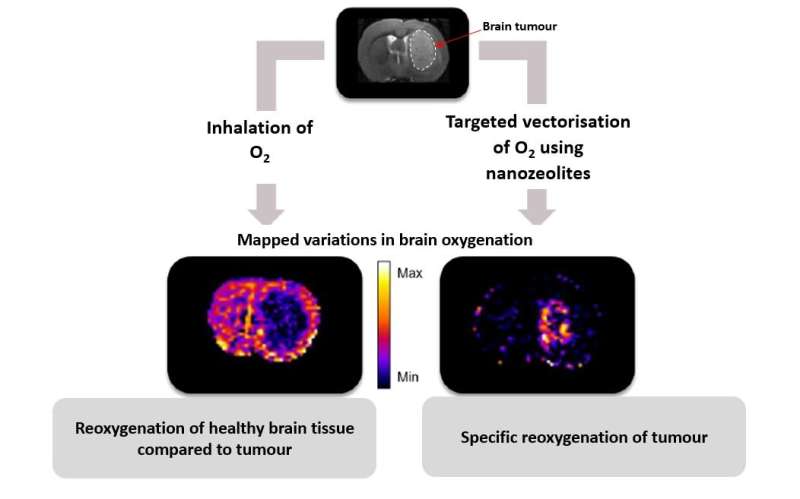While inhaling oxygen (O2) results in reoxygenation of healthy brain tissue at the expense of the tumour (left), administered oxygen-enriched nanozeolites lead to vasodilation/reoxygenation within the tumour itself (right). Credit: Clément Anfray – Samuel Valable
Glioblastoma, the most widespread and lethal primary brain tumor in adults, is notoriously difficult to treat due to the surrounding lack of oxygen essential to the effectiveness of current treatment.
A team of CNRS and University of Caen Normandie researchers have successfully delivered the necessary oxygen to the tumor using zeolite nanocrystals. While inhaling oxygen supplies only healthy brain tissue, the nanoparticles are able to target the tumor itself, whose growth causes damage to the barrier separating the brain from the circulatory system. This allows nanocrystals delivered intravenously to reach the tumor.
The researchers also demonstrated that nanozeolites are harmless both to other cells and animals. The oxygen-rich nanocrystals have been shown to be effective in increasing oxygenation of the glioblastoma. This proof of concept paves the way for future improvements to existing treatments. The study was recently published online in Biomaterials with a print version expected in October 2020.
More information: Clément Anfray et al. Nanosized zeolites as a gas delivery platform in a glioblastoma model, Biomaterials (2020). DOI: 10.1016/j.biomaterials.2020.120249
Journal information: Biomaterials
Provided by CNRS























